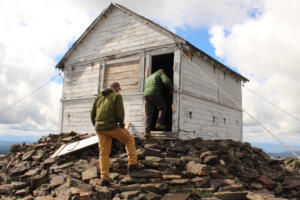By Don Brunell
Guest Columnist
There are dams that should come down and those that shouldn’t.
Hopefully, as the U.S. Army Corps of Engineers conducts its review of the 14 federal dams on the Columbia and Snake rivers, that will become abundantly clear.
Here is the difference.
Demolishing the two dams on the Elwha River west of Port Angeles was a good thing. The dams were built in the early 1900’s to bring electricity to the Olympic Peninsula at a time when salmon and steelhead were plentiful in other Pacific Northwest rivers. Neither dam had fish ladders.
On the Elwha, the issue was clear: removing the dams allowed salmon and steelhead to move upstream to spawn.
But breaching the four Lower Snake River dams is entirely different.
For one thing, the billions of dollars paid by Bonneville Power Administration (BPA) ratepayers to improve fish passage and spawning habitat throughout the Columbia/Snake river system is now paying off. Salmon are returning from the ocean in record numbers.
It wasn’t always that way. In 1992, a single male sockeye salmon, dubbed Lonesome Larry, managed to swim 900 miles from the mouth of the Columbia River to Redfish Lake in Idaho’s Sawtooth Mountains. By 2011, the Idaho Fish and Game Department reported that 1,070 sockeye returned to Redfish to spawn.

